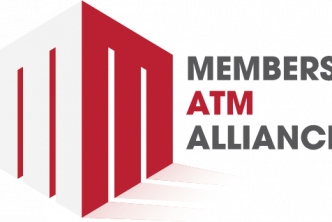 By Roy Seifert, Client Trainer
By Roy Seifert, Client Trainer
John M. Floyd & Associates (JMFA)
Everywhere you look this time of year there are signs of the annual Back-to-School ritual. As school begins across the country, teachers are busy setting up classrooms and preparing the resources to help students succeed. And parents are focused on getting their children the supplies they will need to start a new year of learning. According to the National Retail Federation, combined back-to-school spending is expected to reach $80.7 billion for families with students from elementary through college.
But when it comes to ensuring that consumers have the information and resources they need to maintain financial knowledge, there is still much to learn. According to a FINRA Investor Education Foundation report, only 34 percent of respondents could correctly answer four out of five questions on a quiz about basic financial concepts. This is down from 42 percent in a 2009 study.
As this research suggests, there is clearly a need for reliable financial education related to maintaining a healthy financial footing. Following are five steps you can take to make sure your credit union is providing the knowledge and tools your members can use to address their financial needs. And, that your employee training ritual deserves more than just a passing grade.
- Make sure employees fully understand your member service philosophy
When was the last time you listened to how your employees present your services and programs to new or existing members? Do they have the knowledge and confidence to fully explain the details — and member benefits and responsibilities — across the board?
Or does their loss of confidence or personal bias get in the way of creating excellent service experiences for every member?
If employees lack the knowledge to explain your services precisely, or the passion to deliver the highest caliber service to everyone, your members’ experiences and your institution’s overall performance will suffer. However, using these situations to create teachable moments for employees can make them more effective ambassadors for the institution and likely make their jobs lot more enjoyable.
- Establish on-going training opportunities to keep the rules and details top-of-mind
No matter how long an individual has been doing his or her job, there are various reasons why ongoing training opportunities are beneficial:
- member expectations and needs vary;
- regulations on consumer products and services are always changing;
- new technology impacts the way the industry operates; and
- complacency can influence the way people address their daily responsibilities.
And don’t forget, just like it was when we were children, adults learn and retain information differently. Some benefit from face-to-face interaction, while others prefer the convenience of online opportunities. However your employees prefer to receive information, everyone benefits from role-play opportunities where they can practice what they have learned to gain confidence in their knowledge retention and delivery.
Providing employees with ongoing, effective training situations allows them to step away from their daily responsibilities to increase their knowledge, share member feedback with their peers, and learn different service techniques and regulatory updates (when industry experts are incorporated into the format). Training sessions are also a great way to build teamwork and reinforce the value you place in the contributions your employees make to the institution.
Also, studies show that training increases productivity, improves employee satisfaction and motivation, and consequently boosts staff retention. This is vital to any successful organization since replacing existing staff can be an expensive proposition costing from 30 percent to over 250 percent of an individual’s total compensation. A survey of 500 HR professionals, sponsored by Allied Van Lines, found that it costs an average of almost $11,000 to fill one position.
But don’t stop there. Once employees have received training and are back at their desks, do you provide quick references for them to refresh their understanding and presentation of program and service details?
- Supply the tools necessary to facilitate service management
Whether it’s traditional classroom pencils, pens and notebooks, or next generation cloud software, analytics and reporting capabilities, having the proper tools to capture and utilize information is essential to a long-term learning process and effective service management.
When employees have access to up-to-date reporting information and account holder activity, they are in a much better position to see trends, spot potential problems and anticipate how to implement changes to improve the service experience. Real-time data is also a helpful tool for ensuring that performance and compliance issues are being dealt with effectively.
- Stay apprised of changes in regulations and best practices
Maintaining awareness of the changing environment of our highly regulated industry is essential for avoiding potential compliance and legal jeopardy. Let’s face it, there are a lot of rules related to almost every aspect of banking operations — from deposits to lending to IT, privacy, cybersecurity and consumer protection. And they are constantly being scrutinized and often changed by regulators.
Preserving compliance at every level can be challenging if you don’t have a full understanding of the risks and best practices related to your product and service offerings.
Tapping into proven expertise around compliance regulations — as well as the risks of litigation around full consumer disclosure, fee assessment, processes and procedures — can help you avoid the repercussions of increased regulatory and legal scrutiny. What’s more, it can increase employees’ confidence and give them the satisfaction of knowing they are providing the best possible service for your members.
- Provide on-going communication to reinforce member knowledge
For best results, employees aren’t the only ones who need ongoing access to information about available service options, account status and member responsibilities. Let’s face it, when consumers are balancing their financial needs with other work and family obligations, it can be overwhelming — especially when they are hit with an unexpected expense, have an unplanned employment interruption or face an emergency situation. They need to know right away that their financial institution is there to help them maintain financial stability until the situation passes.
Regular communications about such important issues as account status and the range of services you offer to keep them on track can go a long way toward giving your members financial peace of mind — in both good and bad times — and build or strengthen their sense of loyalty to your institutional brand. During times of uncertainty, knowing where to turn for answers and who to trust in an emergency makes everyone feel more secure and well-informed.
Where do your members turn for their financial education and support?
When it comes to acquiring financial services, a 2018 study by J.D. Power found that 78 percent of U.S. retail bank customers are interested or very interested in receiving financial advice or guidance from their bank. Help with improving their financial situation was at the top of the list for 41 percent. Thirty-three percent wanted guidance on how to keep track of spending and household budgets. However, only 28 percent of respondents recall receiving any type of financial advice.
The beginning of a new school year also leads to increased expenses, followed soon by holiday season spending. Are you providing your employees with the resources they need to help your members maintain financial security throughout the year?
Increasing your focus on employee training and member education and advice is a solid way to demonstrate your institution’s expertise, empower your members with greater financial literacy and strengthen long-term relationships. And that’s a valuable lesson that will pay off for the long term.





